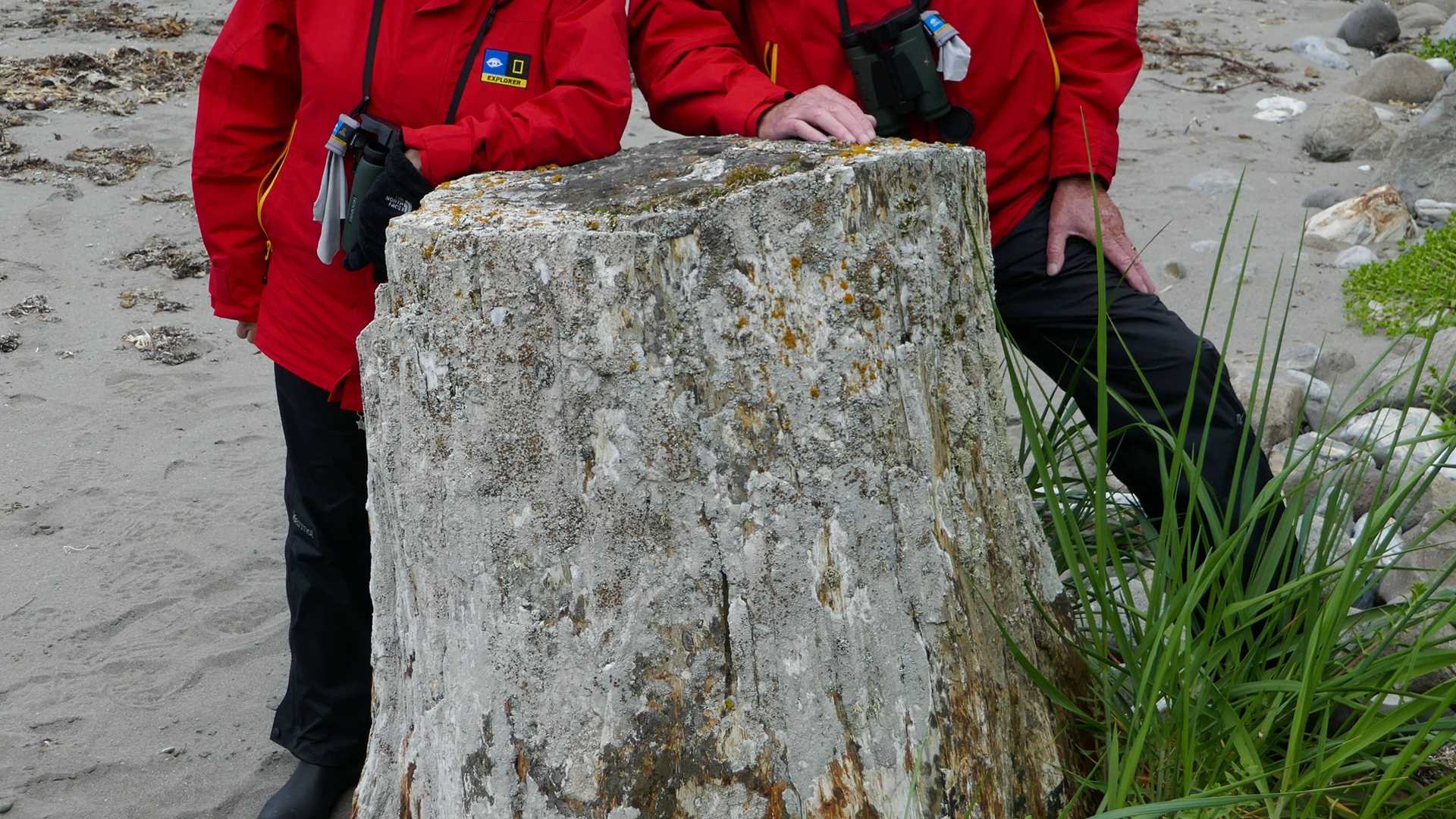After a nice relaxing morning at sea National Geographic Orion caught a view of one of the stratovolcanoes located near the western end of the Alaska Peninsula. Pavlof is one of the most active volcanoes in North America and has erupted 24 times in the past 100 years and the fact that we could see it was cause for celebration. On the back deck the crew set up a bloody mary bar with sausages and all the condiments to tie us over until lunch. Fin whales and brown bears disrupted our geology talk but that has been the theme this voyage across the Bering Sea and now we enter another amazingly rich body of water, the Gulf of Alaska.
After lunch we explored Unga, the largest of the Shumigan Islands. These islands have been occupied by Aleuts for the last 8,000 years. Unga became an important station between Kodiak and Unalaska providing a stopover for Aleut hunters as they paddled small skin covered boats along the coast for their Russian masters. Even after the purchase of Alaska in 1867 Unga continued to be a center for commercial sea otter hunters and we were blessed to see this species of weasel as we walked down the beach. During Bering and Steller’s epic voyage from Kamchatka their ship St. Peter spent eight days in the Shumigan Islands, and it was here that they had their first contact with the Aleut people. Naturalist Georg Steller was convinced though they spoke a different language, that they were related to the people of Kamchatka. Steller became the first scientist to hypothesize an Asian origin for Native Americans from what he found on Kayak Island and this encounter. The first casualty of the voyage, Nikita Shumigan died of scurvy and was buried on nearby Nagai Island.
One of the highlights for us on Unga was seeing the petrified forest. Hard to fathom the fact that once upon a 25 million years ago there were massive sequoias growing here. The trees were toppled by a lahar, a flow of ash and coarser products mixed with water that was pushed out in the form of a mud flow by a volcanic eruption. The flow engulfed the trees and snapped them off at their stumps, encasing them in volcanic debris. Over millions of years, the organic material of the trees was replaced by silica-based minerals that precipitated within the tree cells to produce petrified wood. Another incredible day in this remote part of Alaska!







